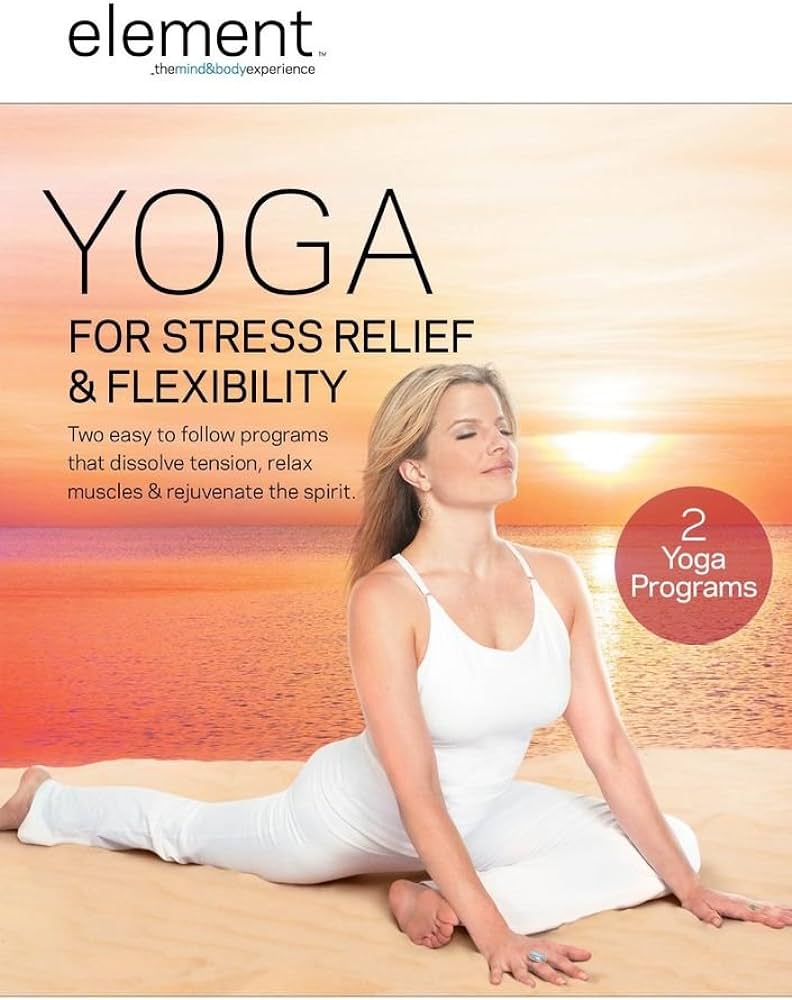In today’s fast-paced world, stress seems to be an inevitable part of our lives. Whether it’s work, relationships, or other responsibilities, it’s easy to get overwhelmed and feel like there’s no escape from the constant pressure. However, there is a powerful tool that can help you find tranquility amidst the chaos – yoga.
As a yoga practitioner for the past five years, I can attest to the incredible benefits it offers for stress relief and flexibility. When I first started, I was struggling with managing my stress levels, and my body felt tense and rigid. Little did I know that embarking on this yoga journey would change my life for the better.
Yoga is not just exercise; it’s a holistic practice that encompasses physical postures (asanas), breathing techniques (pranayama), and meditation. Together, these elements work in harmony to help release tension from the body and calm the mind. When you step onto your mat, a transformation begins to occur, helping you let go of the burdens you carry and find a sense of peace within.
One of the most immediate benefits of yoga is the relief of physical tension. Asanas, such as forward folds and gentle twists, help stretch and open up the muscles, releasing accumulated tension. I remember the first time I practiced a forward fold and felt my hamstrings slowly relaxing as I surrendered into the pose. It was as if the weight of the world was being lifted off my shoulders, and I could finally breathe deeply again.
Moreover, yoga helps improve flexibility by consistently working on stretching and lengthening the muscles. As we age, our muscles tend to become tighter and less pliable, which can lead to discomfort and limited range of motion. Through regular yoga practice, I have experienced a significant increase in my flexibility, which has not only improved my physical health but also contributed to an overall sense of freedom and ease in my body.
Apart from the physical benefits, yoga has a profound impact on stress reduction. When we are stressed, our bodies go into fight-or-flight mode, activating the sympathetic nervous system and flooding our bodies with stress hormones like cortisol. This constant state of heightened arousal can lead to chronic stress and various health problems. Yoga helps activate the parasympathetic nervous system, which is responsible for the relaxation response, counteracting the negative effects of stress.
I vividly recall my first experience with the relaxation response during a guided meditation at the end of a yoga class. As my teacher calmly guided us to focus on our breath and let go of our thoughts, I felt a profound sense of stillness washing over me. It was as if the weight of my worries had been lifted off my shoulders, and for those few moments, I was completely at peace. This experience taught me the power of mindfulness and how it can transform our relationship with stress.
In addition to physical postures and meditation, pranayama, or breath control, plays a crucial role in managing stress. Our breath is intimately connected to our emotions, and by consciously regulating our breathing patterns, we can influence our mental and emotional states. Breathing techniques like deep belly breathing and alternate nostril breathing help activate the relaxation response, calming the mind and reducing anxiety. I regularly practice these techniques whenever I feel overwhelmed, and they never fail to bring me back to a state of calm.
As I continued my yoga journey, I realized that the benefits extend beyond the physical and psychological realms. Yoga is a practice of self-discovery, allowing us to cultivate a deeper connection with ourselves and the world around us. The mindfulness and presence we develop on the mat gradually permeate into other areas of our lives, enhancing our relationships, improving our focus, and fostering a sense of gratitude.
If you’re new to yoga, don’t be intimidated by the seemingly complex poses or the flexible yogis you see on social media. Yoga is a personal journey, and every body is unique. It’s not about how your pose looks, but rather how it feels. Start with gentle beginner classes or online tutorials, and remember to listen to your body and honor its limits. With consistent practice and patience, you will gradually reap the benefits and witness the positive changes unfolding within you.
In conclusion, yoga is a powerful practice for stress relief and flexibility. From my personal experience, it has helped me find solace in the midst of chaos and cultivate a healthier relationship with stress. Through asanas, pranayama, and meditation, yoga releases physical tension, increases flexibility, and activates the relaxation response. Beyond the physical benefits, it offers a pathway to self-discovery and a deeper connection with ourselves and the world. So, roll out your mat, take a deep breath, and embark on this beautiful journey towards stress relief and flexibility. Namaste.
